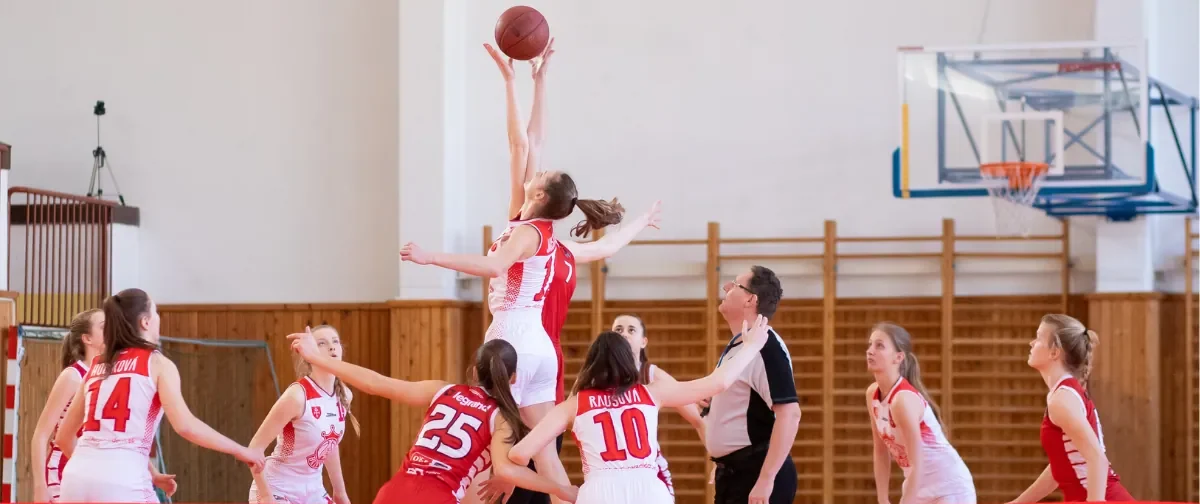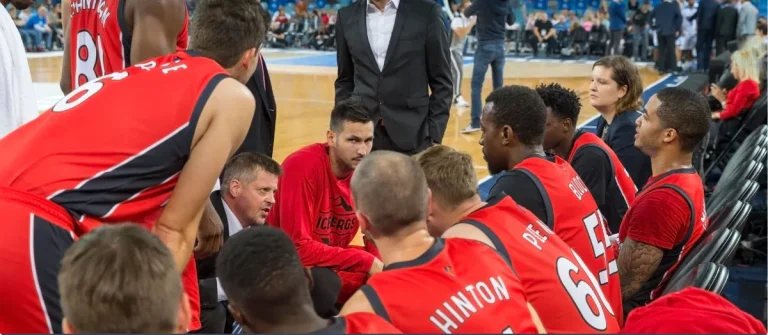How To Play Pickup Basketball Game?
Looking to elevate your game on the court? Pickup basketball, a popular and accessible sport, offers you just that opportunity. Whether you’re a novice or a seasoned player, pickup basketball games provide a dynamic and enjoyable way to hone your skills while engaging with a diverse community of enthusiasts. In this guide, we’ll explore the world of pick up basketball, sharing insights on how to find games, improve your gameplay, and immerse yourself in this thrilling and social sport.
What is Pickup Basketball Game?
A pickup game in basketball, often referred to simply as “pickup,” is an informal and spontaneous basketball game that is typically played at outdoor or indoor courts, gyms, or local parks. Unlike organized league games or official matches, pickup games are often unstructured and lack formal teams, referees, or set schedules.
In a pickup game, individuals or small groups of players come together to play basketball for fun, exercise, or skill development. Players are usually divided into teams based on the number of participants. The games are played to a certain score or for a set duration.
Pickup games are open to players of various skill levels. They provide an opportunity for people to enjoy the sport without the commitment and structure of organized leagues. These games are known for their inclusivity, allowing anyone with a love for basketball to join in and participate.
Pick up Basketball Rules
Players in a pickup basketball game often decide on the rules collectively before the game. These rules can vary based on player preferences and location. While pickup games are informal, some common guidelines and principles typically apply. However, there are some common guidelines and principles that tend to apply:
Scoring: Players in pickup games typically agree on a specific scoring target, often 11, 15, or 21 points. They award points in increments of one or two, with one-point shots made inside the three-point line and two-point shots from beyond the arc.
Possession: Teams can either call “make it, take it” or have possession alternate after each score. In “make it, take it,” the team that scores retains possession, while in alternating possession, the opposing team gets the ball after each score.
Out-of-Bounds: Pickup games often rely on the honor system for determining out-of-bounds plays. Players typically call their own fouls and out-of-bounds violations. In some cases, there may be designated boundaries or lines to indicate out-of-bounds areas.
Fouls: Players in pickup games typically call common basketball fouls like reaching, pushing, or holding themselves. Occasionally, pickup games may follow a “no blood, no foul” policy, where only blatant or physical fouls are acknowledged.
Free Throws: Pickup games may or may not include free throws for fouls. If free throws are included, they are often taken without a defender and are worth one point each.
Game Winner: The game typically ends when a team reaches the agreed-upon score and is ahead by a margin of two points. However, this can vary depending on the preferences of the players.
It’s important to note that the rules of pick up games are flexible and can adapt to the preferences of those playing. Ultimately, the goal of pick-up basketball is to have fun and enjoy the game with others in an informal setting.
Players Limit for a Pickup Basketball Match
The number of players who can participate in a pickup basketball game can vary widely depending on the preferences of the players and the available space. Pickup games are highly flexible and adaptable, so they can accommodate different group sizes.
Common configurations for pick-up basketball games include:
3-on-3: A smaller game with three players on each team. This format is popular for half-court games and is often used when there are fewer participants.
4-on-4: A slightly larger game with four players on each team. This provides a balance between a full-court game and a smaller, more manageable group.
5-on-5: This is the traditional full-court format with five players on each team, which closely resembles organized basketball. It’s often used when there are enough players to form two full teams.
Any Number: In pickup games, players can play even when there is an unequal number of players on each team, with one team having an additional player or players rotating in and out.
Requirements in a Pickup Basketball Game
For a successful pickup basketball game, you will need some key essentials. Start with a regulation-size basketball, ensuring it’s properly inflated for optimal play. Access to a suitable court is crucial, whether it’s an indoor gym or an outdoor space with a hoop and backboard. Make sure the hoop is set to the NBA standard 10-foot height, although you can agree on a different height if needed.
Dress appropriately in basketball shoes for good traction, and comfortable athletic attire, and don’t forget your water bottle to stay hydrated. While these are the basics, sportsmanship is paramount. Maintain a positive attitude, treat fellow players with respect, and adhere to the fundamental rules of the game for an enjoyable experience.
Consider bringing extras like a first aid kit, a spare basketball, or personal protective gear based on your preferences. However, the core ingredients for a successful pickup basketball game are a shared love for the sport, a welcoming atmosphere, and a group of players ready to have fun and compete on the court.
Tips to Win a Pickup Game
Here are brief pick-up basketball tips for each of the six headings:
Skill Development: The process of improving basketball abilities such as shooting, passing, dribbling, and defense to become a more effective player.
Teamwork: Collaborative efforts among players to work together effectively on the court, utilizing each other’s strengths and strategies to achieve success.
Effective Defense: The skill of preventing the opposing team from scoring by guarding players, contesting shots, and securing rebounds.
Shooting Accuracy: The ability to consistently make baskets from various positions on the court, including mid-range and three-point shots.
Game Awareness: A player’s understanding of the flow of the game, including when to make strategic decisions. Such as passing or shooting, and adapting to changing circumstances on the court.
Positive Mindset: Maintaining an optimistic attitude and mental resilience throughout the game, even in the face of challenges or adversity.
Benefits of Pickup Games in Basketball
Participating in pickup basketball games offers a range of benefits for players of all skill levels and ages:
Physical Fitness: Pickup games provide an excellent cardiovascular workout, helping players stay in shape, improve endurance, and develop agility.
Skill Enhancement: Regular play enhances basketball skills such as shooting, passing, dribbling, and defense through practical experience.
Social Interaction: Pickup games foster a sense of community and provide an opportunity to meet and connect with people who share a passion for basketball.
Teamwork: Players learn to work together, adapt to different playing styles, and develop teamwork skills essential in basketball and life.
Stress Relief: Basketball offers an outlet for stress relief, allowing players to unwind and have fun while staying active.
Competition: Pickup games offer friendly competition and a chance to test skills against various opponents, enhancing competitiveness and sportsmanship.
Flexibility: Pickup games are informal and flexible, making it easy to fit them into busy schedules and adapt to different skill levels.
Community Engagement: Many pickup games take place in local parks or recreational facilities, contributing to community engagement and a sense of belonging.
Enjoyment: Ultimately, pickup basketball is about enjoying the game, building friendships, and having a good time while staying active.
Pickup basketball offers fitness, skill enhancement, and a friendly player community, making it a popular and accessible choice.
FAQs
What are the unwritten rules or etiquette in pickup basketball games?
This question delves into the informal norms and expectations that players often follow during pickup games. Such as calling fouls, respecting possession, and managing substitutions, which can significantly impact the overall experience on the court.
Are there any common pickup basketball strategies or plays players use?
Yes, pickup basketball players commonly use strategies like spacing, pick and roll, isolation, fast breaks, communication, teamwork, and ball movement to enhance their performance on the court. These strategies help create scoring opportunities and improve overall gameplay.
What are the most common pickup basketball injuries?
Common pickup basketball injuries include ankle sprains, knee strains, and minor cuts or bruises. Prevention involves warm-ups, proper footwear, hydration, sportsmanship, conditioning, stretching, self-awareness, and court safety awareness.
What is high pickup basketball?
High pickup basketball refers to informal games played at a skilled and intense level, usually by experienced players outside of organized leagues.
Conclusion
Pickup basketball offers a dynamic and enjoyable way to stay active while honing your skills on the court. By embracing teamwork, strategies, and sportsmanship, players can make the most of their pickup basketball experience. Staying mindful of common injuries and taking preventive measures ensures that the game remains a fun and injury-free pursuit for players of all levels. So, whether you’re a seasoned baller or just starting, pickup basketball provides a fantastic opportunity to shoot some hoops and build a sense of community around the game.

Passionate basketball player striving for excellence on and off the court. Dedicated to the game since youth, I have honed skills through years of practice. Explore my journey, gear reviews, and dunking tips. Let’s elevate our game together!







